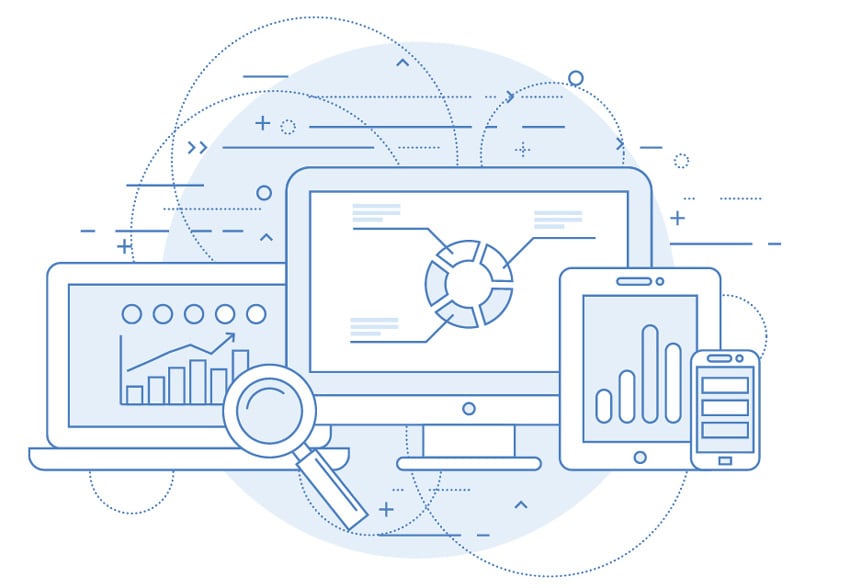Why Will Analytics Be The Next Competitive Edge?
Analytics is becoming a competitive edge for organizations. Once being a “nice-to-have,” applying analytics is now becoming mission-critical.
An August 6, 2009, New York Times article titled, “For Today’s Graduate, Just One Word: Statistics”[1] reminds me of the famous quote of advice to Dustin Hoffman’s character in his career breakthrough movie, The Graduate. It occurs when a self-righteous Los Angeles businessman takes aside the baby-faced Benjamin Braddock, played by Hoffman, and declares, “I just want to say one word to you—just one word—‘plastics.’” Perhaps a remake of this movie will be made and updated with the word “analytics” substituted for plastics.
The use of analytics (that include statistics) is a skill gaining mainstream value due to the increasingly thinner margin for decision error. There is a requirement to gain insights and inferences from the treasure chest of raw transactional data that so many organizations have now stored (and are continuing to store) in a digital format. Organizations are drowning in data, but starving for information.
“The application of analytics is becoming commonly accepted, but will senior executives realize it?”
The application of analytics is becoming commonly accepted, but will senior executives realize it?
How do executives and managers mature in applying accepted methods?
Managers today are maturing in applying progressive managerial methods. Consider this. Roughly 50 years ago, CEOs hired accountants to do the financial analysis of a company, because this was too complex for them to fully grasp. Today, all CEOs and mainstream businesspeople know what price-earnings (PE) ratios and cash flow statements are, and that they are essential to interpreting a business’ financial health. They would not survive or get the job without this knowledge.
Twenty years ago, CEOs of companies didn’t have computers on their desks. They didn’t have the time or skill to operate these complex machines and applications, so they had their secretaries and other staff do this for them. Today, you will become obsolete if you don’t at least personally possess multiple electronic devices (such as laptops, mobile phones, BlackBerrys, and PDAs) to have the information you need at your fingertips.
Business analytics is the next wave.
Today, many businesspeople don’t really know what predictive modeling, forecasting, design of experiments, or mathematical optimization mean or do, but over the next ten years, use of these powerful techniques will have to become mainstream—just as financial analysis and computers have—if businesses want to thrive in a highly competitive and regulated marketplace. Executives, managers, and employee teams who do not understand, interpret, and leverage these assets will be challenged to survive.
When we look at what kids are learning in school, then that is certainly true. We were all taught mean, mode, range, and probability theory in our first-year university statistical analytics course. Today, children have already learned these in the third grade! They are taught these methods in a very practical way. If you had x dimes, y quarters, and z nickels in your pocket, what is the chance of you pulling a dime from your pocket? Learning about range, mode, median, interpolation, and extrapolation follow in short succession. We are already seeing the impact of this with Gen Y/Echo boomers who are getting ready to enter the workforce: they are used to having easy access to information and are highly self-sufficient in understanding its utility. The next generation after that will not have any fear of analytics or look toward an “expert” to do the math.
“There is always risk when decisions are based on intuition, gut feel, flawed & misleading data, or politics.”
—Gary Cokins, Founder, Analytics-Based Performance Management LLC
There is always risk when decisions are made based on intuition, gut feel, flawed and misleading data, or politics. In Babson College Professor Tom Davenport’s popular book, Competing on Analytics: The New Science of Winning, [2] he makes the case that increasingly, the primary source of attaining a competitive advantage will be an organization’s competence in mastering all flavors of analytics. If your management team is analytics-impaired, then your organization is at risk. Analytics is arguably the next wave for organizations to successfully compete and optimize the use of their resources, assets, and trading partners.
Substantial benefits are realized from applying a systematic exploration of quantitative relationships among performance management factors. When the primary factors that drive an organization’s success are measured, closely monitored, and predicted, that organization is in a much better situation to adjust in advance and mitigate risks. That is, if a company is able to know (not just guess) which nonfinancial performance variables directly influence financial results, then it has a leg up on its competitors.
recent posts
You may already have a formal Data Governance program in [...]

